Contents
Exchange Surfaces
Surface Area to Volume Ratio
Exchange surfaces in organisms have many similar adaptations to make transport across the surface more efficient.
The relationship between the size of an organism or structure and its surface area to volume ratio plays a significant role in determining the types of adaptations an organism will have.
Small organisms, such as amoeba, have a very large surface area in comparison to their volume. This means that there is a big surface for exchange of substances, but also a smaller distance from the outside of the organism to the middle of it. As a result, very small organisms can simply exchange substances across their surface.
The larger an organism is, the smaller its surface area compared to its volume and the larger the distance from the middle to the outside. Larger organisms will typically have a higher metabolic rate, which demands efficient transport of waste out of cells and reactants into the cells. As a result, they have adaptations that help make the exchange across surfaces more efficient.
Adaptations of Gas Exchange Surfaces
The rate of diffusion can be calculated using Fick’s Law.
Diffusion = (surface area X difference in concentration) / length of diffusion path
Single-celled organisms simply exchange gases across their body surface due to their large surface area to volume ratio.
Gas exchange in insects involves a tracheal system (tracheae, tracheoles, and spiracles). Gas can be exchanged by diffusion, as when cells respire they use up oxygen and produce carbon dioxide, creating a concentration gradient from the tracheoles to the atmosphere. The second method of gas exchange is mass transport, in which an insect contracts and relaxes their abdominal muscles to move gases en masse. When the insect is in flight, the muscle cells start to respire anaerobically to produce lactate. This lowers the water potential of the cells, and therefore water moves from the tracheoles into the cells by osmosis. This decreases the volume in the tracheoles and as a result, more air from the atmosphere is drawn in.
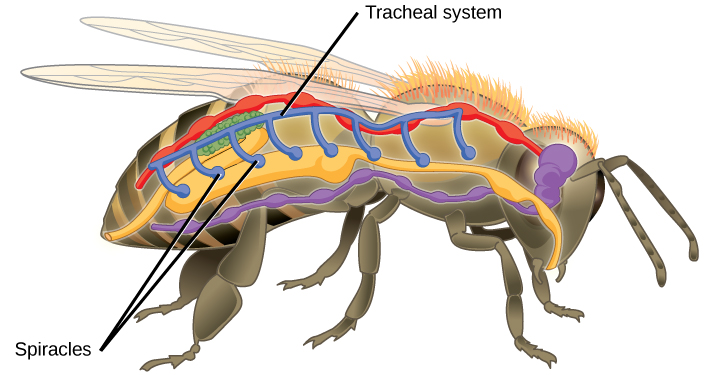
Fish exchange gases across their gills. Gills are made of gill lamellae and filaments, and the process is dependent on the counter-current principle. Gill filaments are stacked at right angles to the gill lamellae to increase surface area.
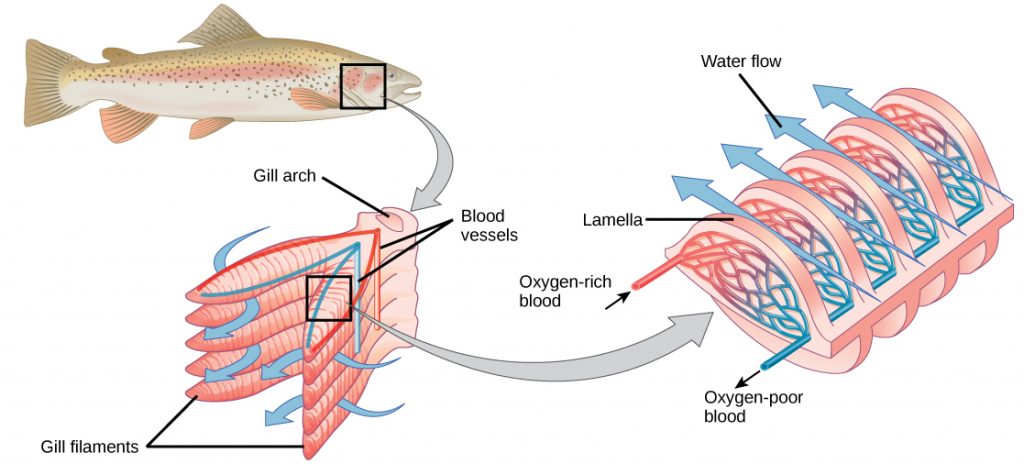
The gill lamellae and filaments are thin, providing a short diffusion distance, and the filaments have a network of capillaries to maintain a concentration gradient helped by the counter-current flow mechanism. This is when water flows over the gills in the opposite direction to the flow of blood in the capillaries. This ensures that a diffusion gradient is maintained across the entire length of the gill lamellae.
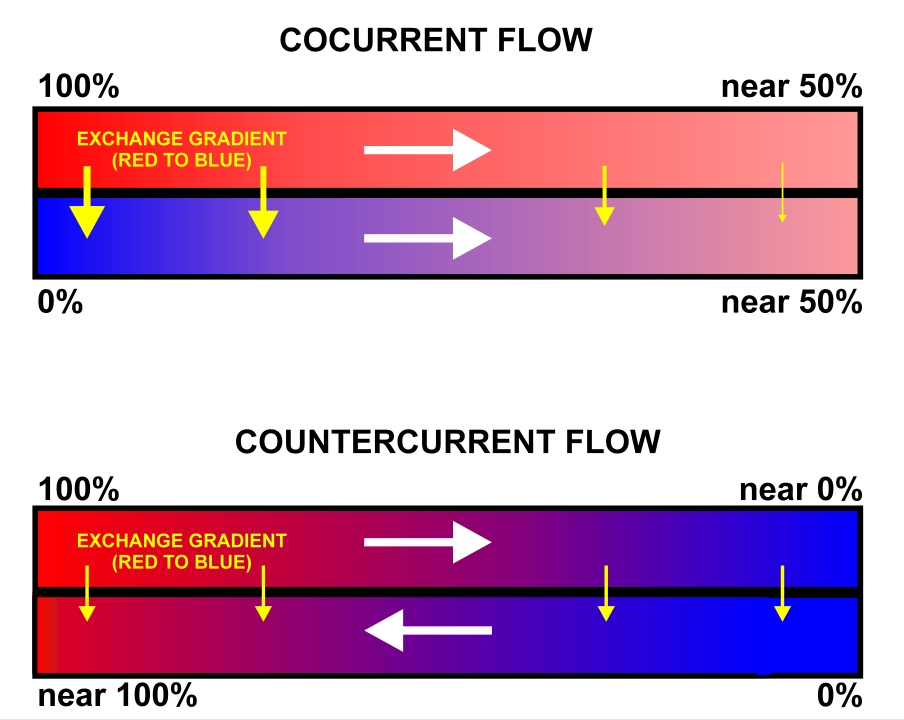
Dicotyledonous plants exchange gases through stomata. Stomata are tiny pores mainly on leaves.
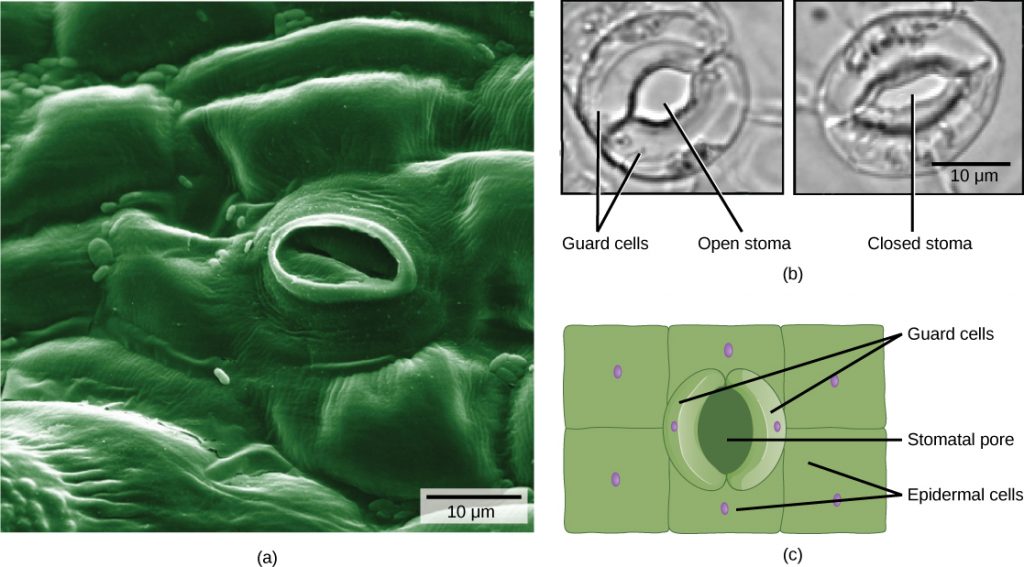
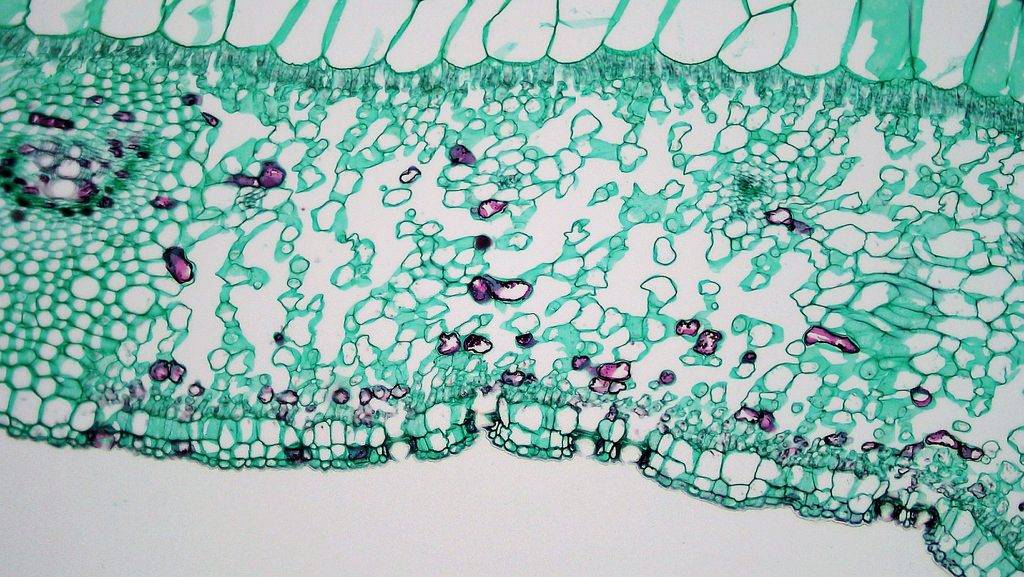
These pores can open or close, determined by the guard cells surrounding them. This is a mechanism to help prevent excessive water loss by evaporation, similar to the valves in spiracles in insects. Another similarity in how both plants and insects prevent water loss is that they both have a small surface area to volume ratio and have waterproof coverings. Xerophytic plants are native to very dry environments and have many additional adaptations to prevent water loss by evaporation. Their cuticle is very thick, they roll up to cover the stomata, the leaves are hairy to trap water vapor, and the stomata are often sunken in pits.
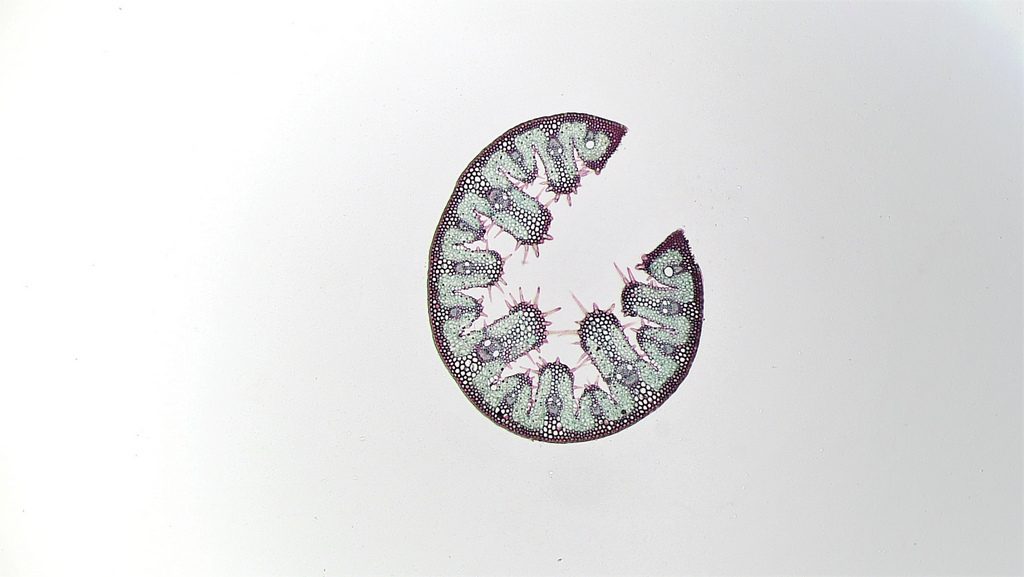
Gas Exchange in Humans
The gross structure of the human gas exchange system can be seen in the diagram below:
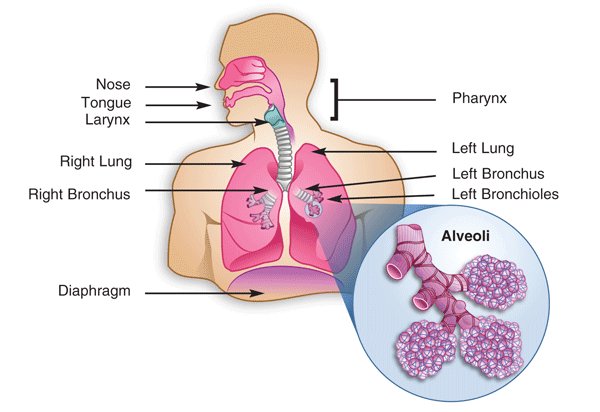
Ventilation is the mechanism of breathing and it involves the diaphragm and antagonistic interaction between the external and internal intercostal muscles in bringing about pressure changes in the thoracic cavity.
| Structure | Inspiration | Expiration |
| External intercostal muscles | Contract | Relax |
| Internal intercostal muscles | Relax | Contract |
| Ribs | Pulled upwards and outwards. | Move downwards and inwards |
| Diaphragm | Contracts and flattens | Relaxes and moves up |
The process of inspiration results in an increased volume of the thorax, therefore a reduced air pressure, so air is forced into the lungs, whereas expiration results in a decreased volume of the thorax, an increased air pressure, and air is forced out of the lungs.
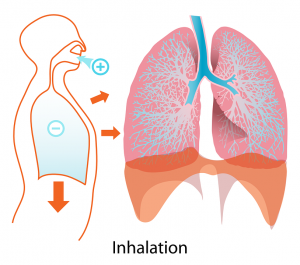
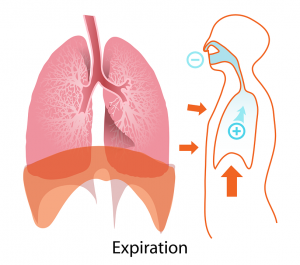
Once the gases are in the alveoli, gas exchange occurs with the blood. Alveoli are tiny air sacs, and there are 300 million in each human lung, which creates a very large surface area for gas exchange. The alveoli walls are also very thin, minimizing the diffusion distance. Each alveolus is surrounded by a network of capillaries to facilitate the removal of exchanged gases and therefore constantly maintains a concentration gradient.
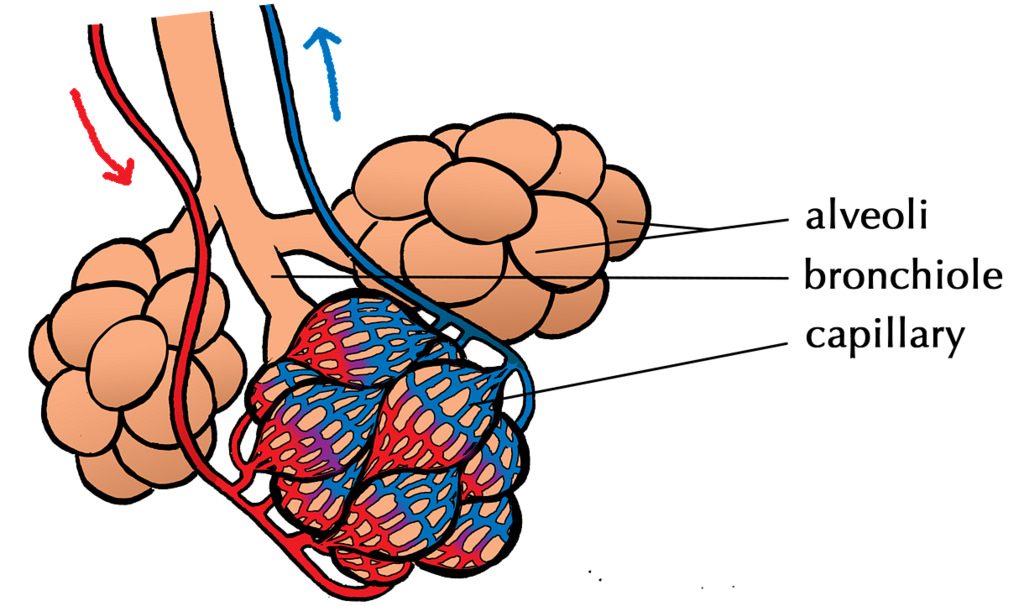
Adaptations for Digestion & Absorption
During digestion, large biological molecules are hydrolyzed into smaller molecules that can be absorbed across cell membranes.
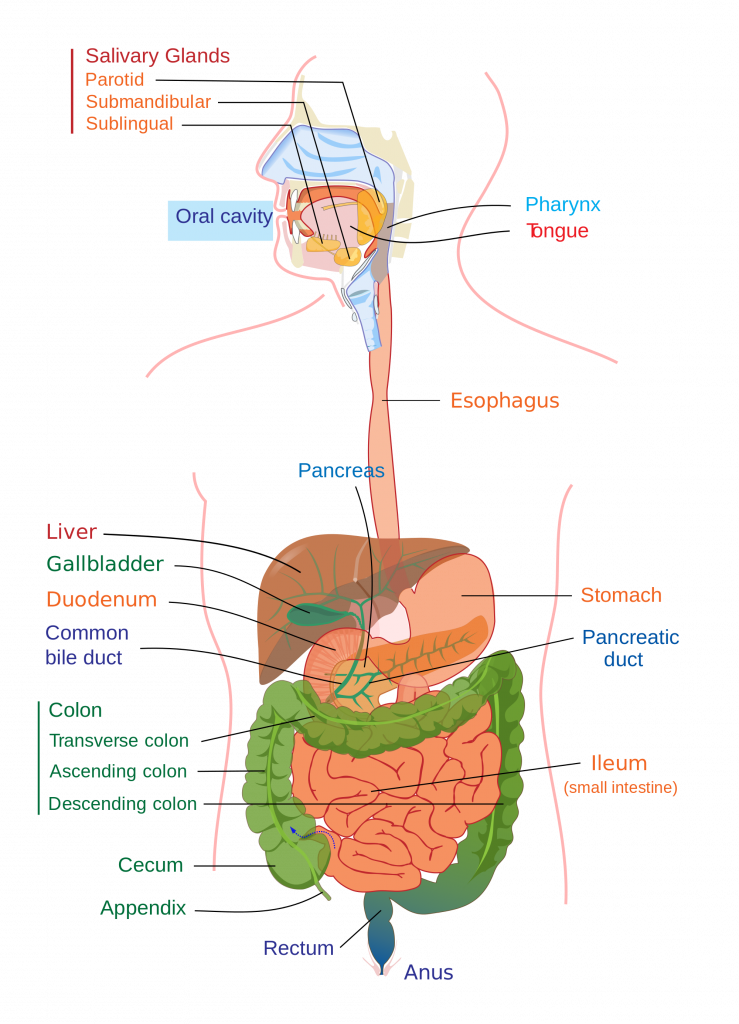
Digestion in Mammals
Carbohydrates require more than one enzyme to hydrolyze them into monosaccharides, typically by amylases and membrane-bound disaccharidases. Amylase is produced by the pancreas and salivary glands. It hydrolyzes polysaccharides into the disaccharide maltose by hydrolyzing the glycosidic bonds. Sucrase and Lactase are membrane-bound enzymes that hydrolyze sucrose and lactose into monosaccharides.
Lipids are digested by lipase and the action of bile salts. Lipase is produced in the pancreas and it can hydrolyze the ester bond in triglycerides to form monoglycerides and fatty acids. Bile salts are produced in the liver and can emulsify lipids to form tiny droplets called micelles. This increases the surface area for lipase to act on.
Proteins are large polymer molecules that can be hydrolyzed by a range of three enzymes: endopeptidases (hydrolyze peptide bonds between amino acids in the middle of a polymer chain), exopeptidases (hydrolyze peptide bonds between amino acids at the end of a polymer chain), and membrane-bound dipeptidases (hydrolyze peptide bonds between two amino acids).
Absorption
In mammals, the products of digestion are absorbed across the cells lining the ileum. To assist with maximum absorption, monosaccharides and amino acids are absorbed by co-transport, a special type of active transport discussed in Topic 2.
The ileum wall is covered in villi, which have thin walls, are surrounded by a network of capillaries, and epithelial cells have even smaller microvilli. All these features maximize absorption by increasing the surface area, decreasing the diffusion distance, and maintaining a concentration gradient.
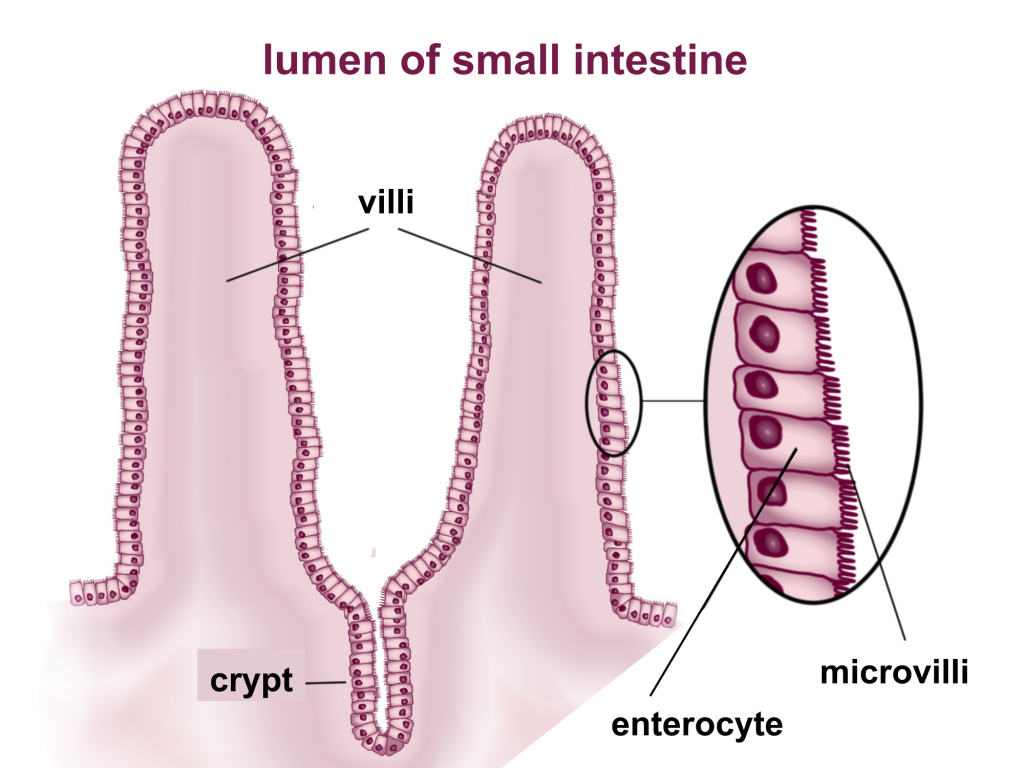
Lipids are digested into monoglycerides and fatty acids by the action of lipase and bile salts. These form tiny structures called micelles, as small as 4nm in diameter. When the micelles encounter the ileum epithelial cells, due to the non-polar nature of the fatty acids and monoglycerides, they can simply diffuse across the cell surface membrane to enter the cells of the epithelial cells. Once in the cell, these will be modified back into triglycerides inside the endoplasmic reticulum and Golgi body.

- What is the name of the gas exchange surface in humans?
- Alveoli
- What is the name of the structures in the ileum to maximize absorption of digested molecules?
- Villi / microvilli
- What are some risk factors for lung disease?
- Smoking / pollution
- What similarities do insects and plants have to reduce water loss?
- Sunken / spiracles
- What is a micelle?
- Spheres / monoglycerides / fatty acids
